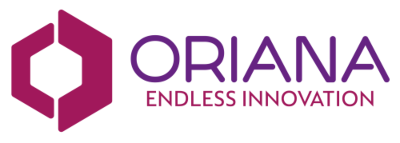As the end of the year approaches, we are not only taking stock on an individual level, but also on a company level. What were the challenges this year? What minor or major successes have we achieved? What steps have we taken to make our operation more profitable next year?
Closely related to the latter question is the topic of digitalization, which represents both an opportunity and a fear. Many people put off embarking on the path of digitalization, based on the assumption that the cost, time and burden of change will be too much for the organization. However, the world does not wait: every day we spend without taking steps towards modernization puts us at a competitive disadvantage.
Here’s what you can do to break the digitalization deadlock.
Why do we resist?
First, let’s look at the typical arguments behind resistance to digitalization. Many times, they are emotional rather than logical:
“It’s going to be too expensive and slow!” Managers are often concerned about the cost of investment and the duration of payback. At the same time, maintaining outdated systems can generate hidden costs and significant risks, such as data loss, entrenched inefficient workflows, or the loss of talented employees.
“It’s worked before!” Employees fear that change will overwhelm them while they also struggle with their daily tasks. However, this is a vicious circle. Resources will not have time to properly investigate how their workflow could be optimized, while at the same time the company’s ability to adapt gradually deteriorates.
“This is only for the big guys!” Small and medium-sized businesses often feel that digitalization is a luxury, even though smaller-scale, well-targeted developments can bring quick results for them as well. Digitalization and digitalized operations are not a gentleman’s whim, but a characteristic of a company that plans for the long term, also that requires and provides security.
Breaking resistance – Small Steps Lead to Big Results
Let’s start with high-return projects: Automating a workflow or sub-area, such as creating a performance evaluation interface, can bring immediate results and build trust for further steps. Here is an example:
A company used low-code technology to quickly and cost-effectively develop an internal training management system. Employees could register for training courses themselves, while trainers could easily manage appointments and attendance. The system automatically sent notifications, generated reports, and the process was fully integrated with the company’s existing systems, such as Google Calendar. With automation, manual administration time was dramatically reduced and HR department productivity significantly improved.
Source: Building a low-code HR employee training management system
Transparent cost calculation: Let’s show the savings that digitalization brings compared to maintaining old systems. Replacing a previously manual workflow can result in time and cost savings that can be measured in the first months.
If we cannot spare the time for this calculation, we ask for the help of a consulting company. Nowadays, many people offer free online advice or consultations, during which we can get proven methods and ideas on how it would be worth starting or continuing digitalization in our company.
Flexible technology, flexible solutions: Cloud-based systems and low-code / no-code platforms are not only cost-effective, but also scalable, so they adapt to the growth of the company in the long term.
When developing Oriana’s latest service, we wanted to answer the concerns of companies stuck in digitalization. Flowra is an implementation methodology combined with a digitalization tool that simultaneously solves the fear of overpricing and lengthy implementation, and thanks to the versatility of our platform, we combine all the advantages of boxed and custom implementations.
Summary
2025 could be a year of transformation – the only question is whether we are ready to put our worries down and finally use digitalization as a tool for success. The end of the year is the perfect time to make new plans and take the first steps.




